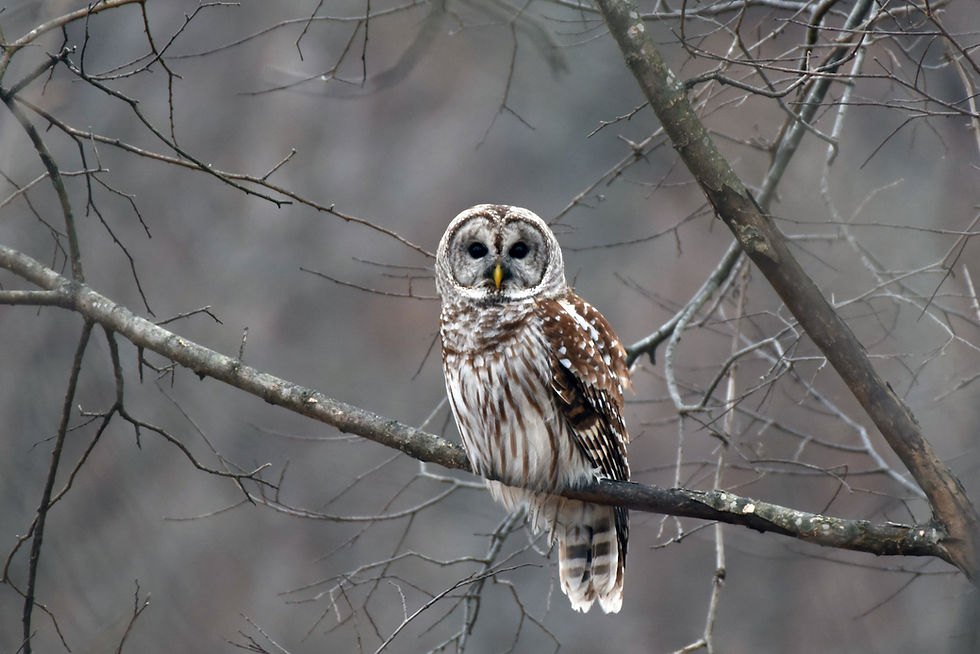Milkweed beetles will have you seeing red
- Willy's Wilderness
- Aug 21, 2023
- 4 min read
Updated: Jul 24
Red milkweed beetles are gorgeous pops of color in a sea of green. These charming, interesting insects are great fun to check out on hot summer days!

Adults are red with black spots and a long body. They are part of the long-horned beetle family. Those “horns” are actually their long, elegant, black antennae.
Their face is — scientifically — adorable. Each antennae splits their two compound eyes in half so that they have four eyes. In fact, their scientific name, Tetraopes tetrophthalamus, means “four eyes four eyes.”
Milkweed = life
Monarchs aren’t the only insect that need milkweed. Red milkweed beetles spend most of their lives on or around their namesake. They love common milkweed, but they can be found on swamp, whorled and green milkweed. Anywhere you find milkweeds — prairies, gardens, ditches on the side of the road — you can find milkweed beetles.

And just like monarchs, red milkweed beetles change shape throughout their life cycle. Early in summer, adult red milkweed beetles lay eggs at the bottom of a milkweed plant. Eggs are usually put inside the milkweed stem, but sometimes moms will even put eggs into a nearby grass stem.
After hatching into larvae, they tunnel down underground. The grub larvae feast on milkweed roots while living under the soil for months until early fall. As the cold really hits, red milkweed beetle larvae tunnel into the roots to get nice and cozy and overwinter there. Just like woodchucks coming out of hibernation, the larvae wake up with the warmth of spring. They might get a chomp or two of the delicious milkweed roots as they rise.
When the time is right, the larvae make the perfect soil chamber to pupate in. Then they emerge a month later as black and red adults, just in time to start feeding on milkweed leaves!
Milkweed for breakfast, lunch and dinner
Adults eat milkweed leaves, buds and flowers. They have a special method to chow down on milkweed.
Milkweed got its name because when a leaf or stem piece is torn off, milky white latex oozes out of the wound. (Does it look like milk to you?) Latex in plants is made up of proteins, resins, gums and more substances that coagulate — thicken and harden — when air hits it. Think about what happens to us when we get a scrape. Our liquid blood starts to harden and scab up to protect our body from letting in bad stuff.
Words to know
Coagulate: To cause fluid to change to a solid or semisolid state.
Continuous: Without stopping or interruption.
Elegant: Graceful or stylish in appearance.
Grub: The larvae of an insect, particularly a beetle.
Namesake: A person or thing that has the same name as another person or thing.
Toxin: A naturally occurring poison produced by living cells or organisms.
Plants use latex to seal themselves up after injury. This protects them from insects. Not only does it act like a bandage after an insect chomps down, it also gums up the insect’s mouth. Critters have learned to avoid eating this plant — unless you are a critter that has a few tricks up its sleeves. Like monarch caterpillars, red milkweed beetles cut the milkweed leaf vein above their picnic spot. The milky latex oozes out at the cut but doesn’t drain down to where the beetles are munching away at the leaf. Success!
If a red milkweed beetle is clumsy and gets latex on itself, it acts fast, rubbing its face against a clean part of the leaf like a washcloth. They don’t want to glue their mouth shut!
Milkweeds are toxic to most animals, but red milkweed beetles have evolved to digest the toxins just fine. It’s like how you can drink a glass of milk but your friend down the street can’t handle dairy. All those toxins go into the red milkweed beetle’s body, making them poisonous to predators.
It’s a great defense. They want other animals to know all about the toxins running through their bodies, so red milkweed beetles advertise this fact with their red and black coloring. Scientists call these warning signs aposematic colors. A bird just has to take one look at the red and black to realize it needs to find something else for dinner.
Purr like a cat and squeak like a mouse
If you had to guess, what noises do you think red milkweed beetles make? It turns out they purr and squeak. A shrill squeaking is produced by rubbing segments of their thorax together. This can be heard when they are picked up and held, stuck in a milkweed blossom, fall on their backs or are fighting. A soft, almost continuous purring noise can be heard when they are standing still.

Red milkweed beetles might use either sound when going about their business, crawling and feeding on milkweed. They combine purring and squeaking when they are held in a closed fist or when two beetles meet and touch antennae or crawl over each other.
The next time you see a milkweed plant, don’t just stop to look for monarchs. Investigate to see if you can find these cool little animals. Watch how they eat. Can you see their four eyes? Don’t forget to listen to their “conversations.” It might open up a whole new tiny world.
____________


